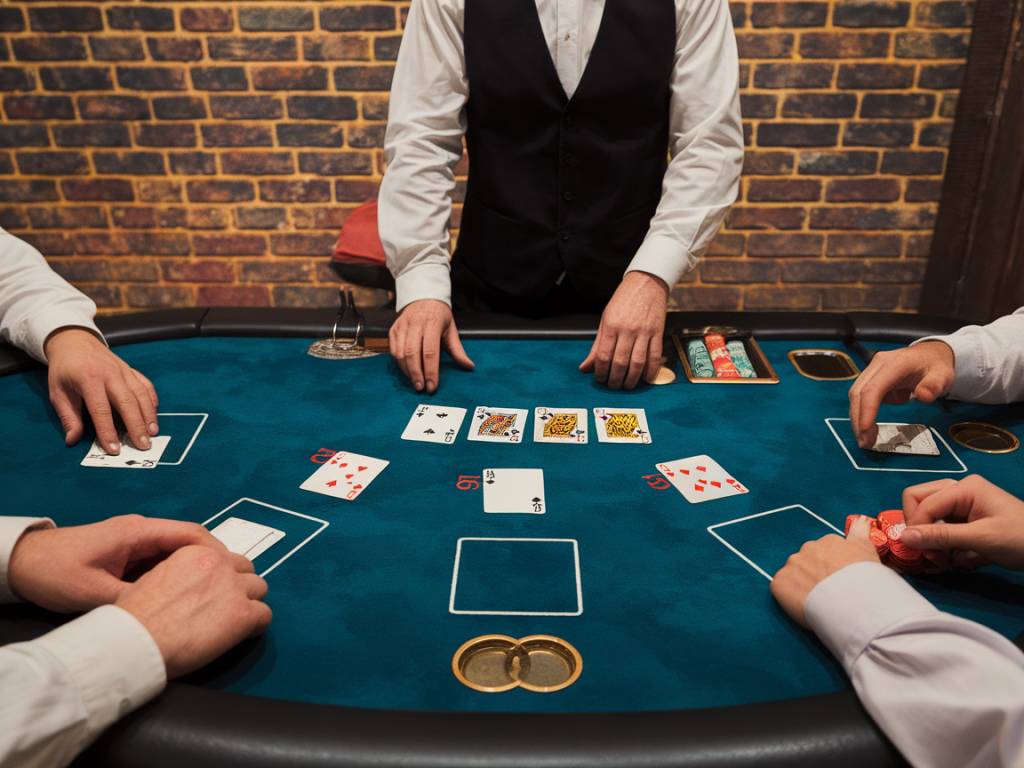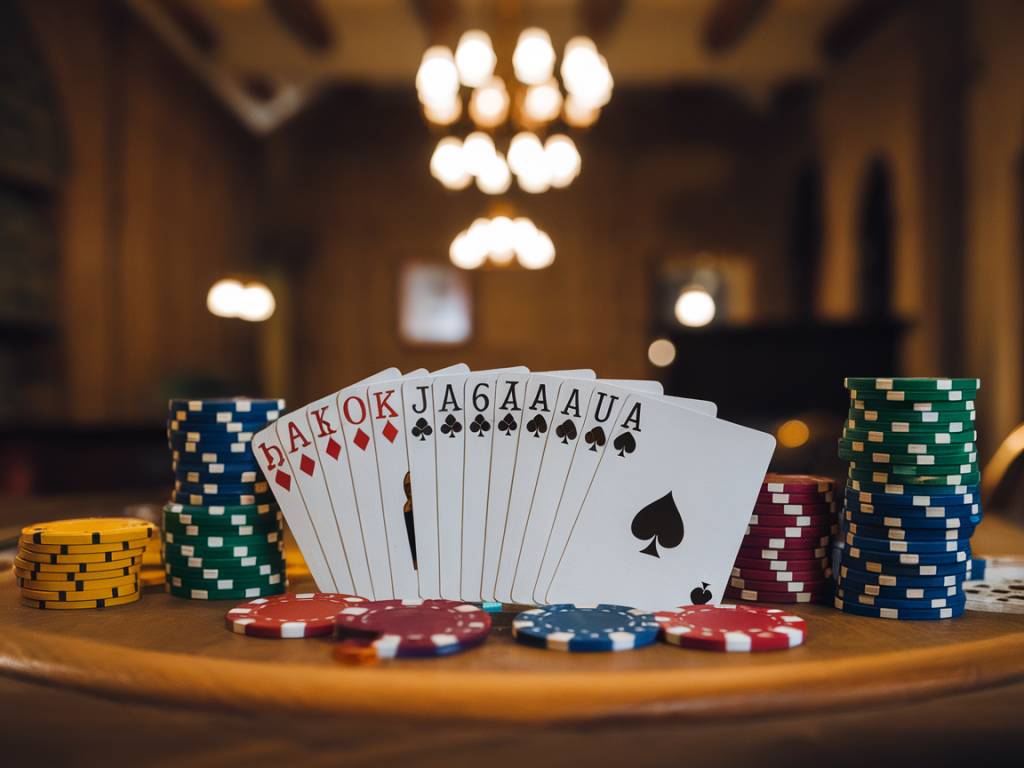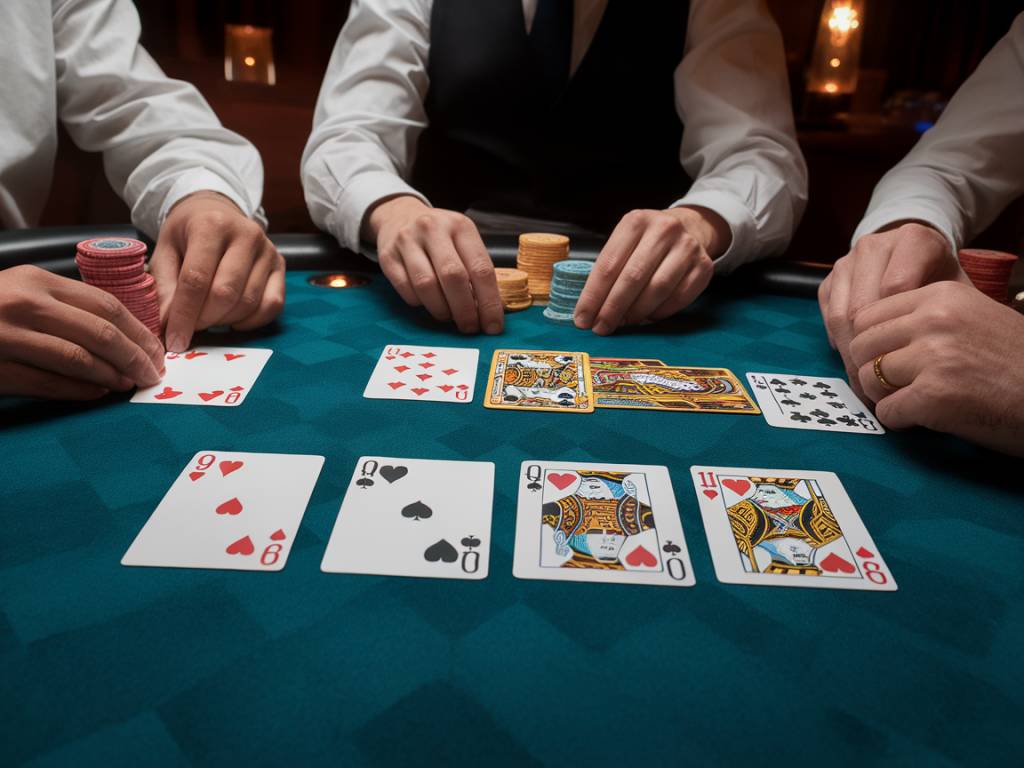Pot-Limit Omaha (PLO) is one of the most thrilling and complex poker variants out there, gaining popularity rapidly among poker enthusiasts. As someone who has spent countless hours at the tables, I can tell you that mastering PLO can be incredibly rewarding. In this article, I’ll walk you through the basics of Pot-Limit Omaha with four cards, how to play it, and some essential strategies to get you started. Ready to dive in? Let’s go! 🃏
Understanding the Basics of Pot-Limit Omaha
In Pot-Limit Omaha, each player is dealt four hole cards (private, hidden cards) and must make the best five-card hand by using exactly two of their hole cards and three of the five community cards dealt face-up in the middle of the table. This creates an intriguing dynamic where the possibilities are far greater than in Texas Hold’em, where players are dealt only two hole cards.
Game Setup and Dealing
Before any cards are dealt, one player is designated as the dealer. The roles of the Small Blind (SB) and Big Blind (BB) then rotate around the table, ensuring a fair game. Here’s a quick rundown on how it works:
After the initial betting round is complete, the dealer places three community cards face-up on the table; this is known as the ‘flop.’ Another round of betting ensues, followed by the dealer revealing the fourth community card, called the ‘turn.’ One more round of betting happens, and then the final community card, known as the ‘river,’ is revealed. The last betting round concludes, and if two or more players remain, there’s a showdown to determine the winner based on the best five-card hand.
Betting Rules
Pot-Limit Omaha is, as the name suggests, played with pot-limit betting. This means that the maximum amount you can bet or raise is limited to the total amount in the pot at that time. Here are the key points:
For example, if the pot is $100 and a player before you bets $20, you can raise $120 (making it a total of $140 to stay in the game). This rule makes PLO a game of big pots and dramatic swings, adding to its overall excitement. 🎉
Starting Hands
Choosing the right starting hands is crucial in PLO. Given that each player has four hole cards, the combinations can be overwhelming. Here are some tips for selecting solid starting hands:
Aim for hands that give you multiple drawing possibilities, which maximizes your chances of hitting a strong hand by the river.
Playing the Flop, Turn, and River
PLO is all about making calculated decisions at every step. Here’s how your strategy should evolve through each community card:
The Flop
If you get a favorable flop, you should generally bet aggressively to build the pot or force weaker hands to fold. Strong two-pair hands, trips, or strong draws to straights and flushes should be bet or raised. Weaker hands or non-improving hands should usually be checked or folded.
The Turn
When the turn card is revealed, you should re-evaluate your hand strength in light of the new information. If your draws have not hit, rethink your betting patterns. This is often where opponents begin to narrow down their hand ranges, giving you a clearer idea of who may have the best hand.
The River
The final community card will solidify many hands, for better or worse. If your hand becomes strong (like hitting a backdoor flush or a high straight), bet for value. On the other hand, if the river card doesn’t help, prepare to fold unless you can bluff your way out of a tight spot.
Bluffing and Reading Opponents
Bluffing in PLO requires a keen understanding of your opponents and timing. Here are some advanced bluffing strategies to consider:
Reading opponents in PLO can be nuanced. Look for betting patterns, timing tells, and showdown hands that give you insight into how your opponents play. 🕵️♀️
Essential Tips and Common Mistakes
As you venture into the world of PLO, keep these essential tips and common mistakes in mind:
Tools and Products to Enhance Your Game
To take your PLO skills to the next level, consider investing in some tools and products designed for poker players:
These investments can pay off greatly by enhancing your skills and understanding of this complex game.
So, there you have it! Pot-Limit Omaha is a game of deep strategy, thrilling moments, and endless possibilities. Whether you’re a poker veteran or a newcomer, there’s always something to learn in PLO. Use these insights to get started, and you’ll soon see why so many players are swearing by this exciting variant. 🎲💰 Good luck at the tables!





